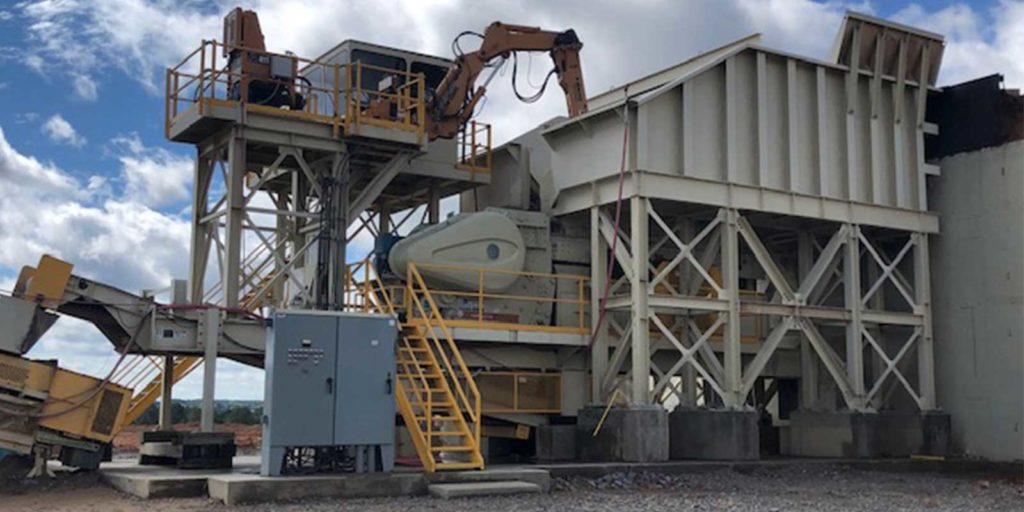Selecting the right primary crusher is foundational to success at a crushing site.
The primary crusher is the engine that drives the rest of the plant; it’s the workhorse that takes blast feed sizes and reduces them to sizes that are manageable for other site components – the belts, the screens, and eventually any secondary crushers – on the road to a finished product.
All components at a site depend on the primary crusher functioning correctly. Picking the right primary crusher is critical to site success.
With that in mind, here’s what the process of selecting a primary crusher looks like when followed correctly. One should start with crusher purpose, move to model refinement, and finish with a successful installation.
1. Identify The Purpose Of The Crusher
The first step in selecting a primary crusher takes place at a high level. It’s necessary to identify the purpose the crusher will be used for.
This purpose is a given that precedes the entire decision-making process. Sometimes, a measure of guidance or experience is needed.
The two main components to consider are feed size and the type of material to be crushed. There are a variety of other factors to review as well – the long-term strategy for the site, discharge gradation, moisture content of the material, and the targeted amount of production, just to name a few.
Gyrator Crushers
Gyratory crushers are typically only used if the targeted amount of production is more than one million tons per year. These machines are made-to-order and often take more than a year to be completed from request. In addition to another month of installation on site. That makes them best suited for plants with long-term plans. They’re ideal for abrasive materials like granite.
Jaw Crushers
Jaw crushers are workhorse crushers and are most commonly used; they’re fit for abrasive material as well but are far more portable than gyratory crushers and can be relocated each year as necessary.
Impact Crushers
Impact crushers are best for less abrasive materials like limestone. These crushers invoke higher wear costs over time but generally provide greater reduction and possibly better shape.
2. Ensure The Fit Of The Crusher
With the overall purpose of the crusher determined, the next step is to hone in on the expected performance of crusher model variations. This is where simulations become vitally important.
The purpose of running a simulation is to determine how the new primary crusher performs and to estimate how the performance will impact the load downstream. Depending on the situation (equipment types, site location, etc.), this is typically done through Metso’s Bruno software or through AggFlow software.
This step may lead to subtle changes in crusher recommendation. For instance, based on simulated results, it may make sense to forego a portable jaw crusher for a stationary model.
After simulation, the next step in the crusher selection process is to visually carry the selection through to other components of the plant via a concept drawing. This will include visual representation of the existing crushing site, complete with topographical map and grade elevation, as well as a depiction of impacted components showing the system’s flow.
A new primary crusher frequently requires updates to conveyors and screens as well when replacing existing units for increased capacity.
3. Implement The Crusher
With the right type and model of crusher selected, the final step in the process is the implementation of the crusher into the plant.
This varies greatly depending on the context and can often become complicated and difficult. To minimize complexity, Mellott offers turnkey crusher installation solutions. Mellott handles the concrete, the integration of various components, and even the electrical work. If relevant, Mellott can incorporate automation along with the software components that facilitate it.
In the long run, crusher installation by Mellott can save you a lot of headaches. Aggregate processing is typically custom to some degree at each crushing site. This may present challenges that require timely and cost-effective solutions. Our expertise allows us to do so efficiently so that you can stay focused on crushing.
Looking for the Right Crusher?
We’re here to help you make the right decision.
At Mellott, we’re experts at navigating all the factors involved in primary crusher selection. If you’re considering a replacement crusher or looking for a first crusher for your site, get in touch with us online or at 855.554.1606, and we can discuss your specific needs.

